Introduction
International affairs informed women’s changing identities during the interwar years and internationalism and pacifism were key to British interwar feminism. Although women’s print media covered women’s suffrage and women’s movements abroad before 1918, the First World War provided a new impetus for a proactive internationalism encouraging women to recognise their part in world politics and challenging conventional assumptions about their sphere of activity and influence.
International women’s organisations including the International Woman Suffrage Alliance and the Women’s International League for Peace and Freedom used their print organs to exchange information and ideas in their struggle for voting and other political rights, and for world peace. Denominational feminists also used periodicals to influence change at international levels as well as to provide material and symbolic support for their peers in other countries. Interest in affairs that made up the British Empire gained momentum, but this led to divisions amongst British feminists over the role they should play in the Empire, particularly India. The construction of modern women as internationally-minded global citizens can be found in more surprising venues too, from the journals of professional organisations, such as The Woman Teacher, to the nation’s flagship magazine for middle-class housewives, Good Housekeeping.
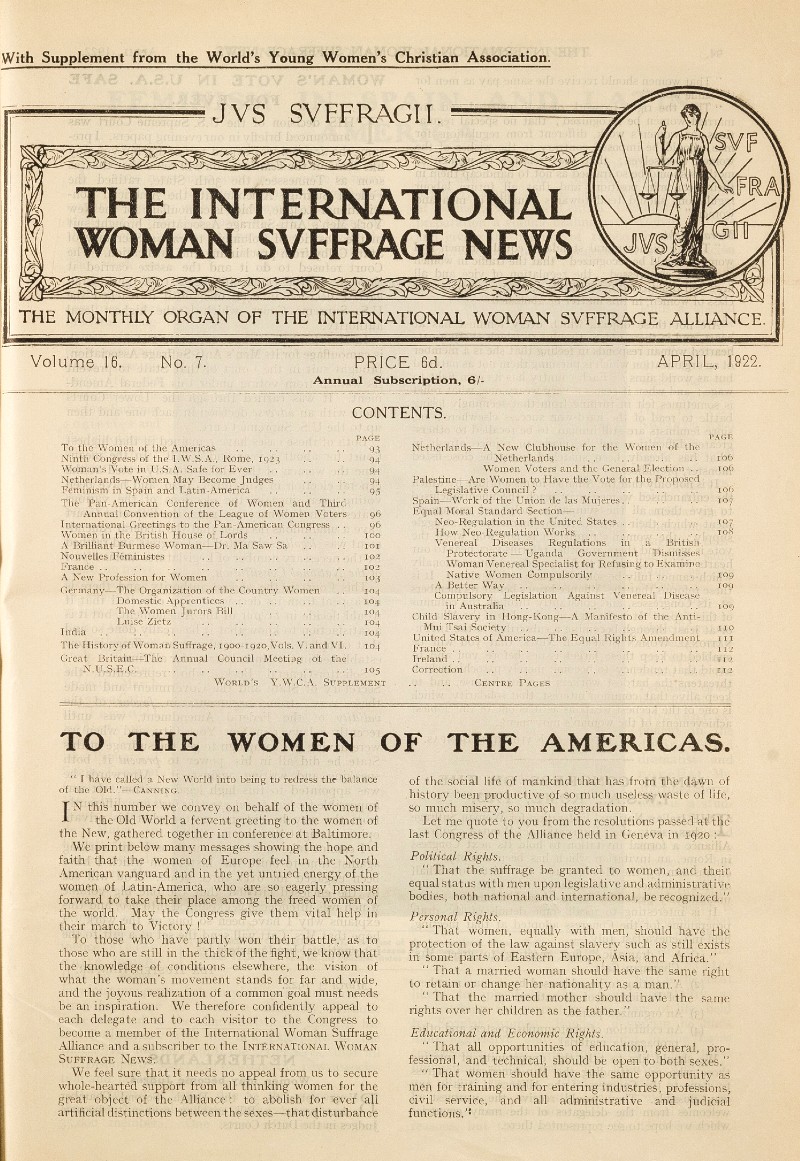 Jus Suffragii, April 1922
Jus Suffragii, April 1922
Groups such as the International Woman Suffrage Alliance worked to harness the franchise gains made in some countries to promote change for women around the world. Jus Suffragii facilitated transnational exchange by publishing a compilation of news from organisations in member countries and encouraging participation in internationalism for its broad and growing membership.
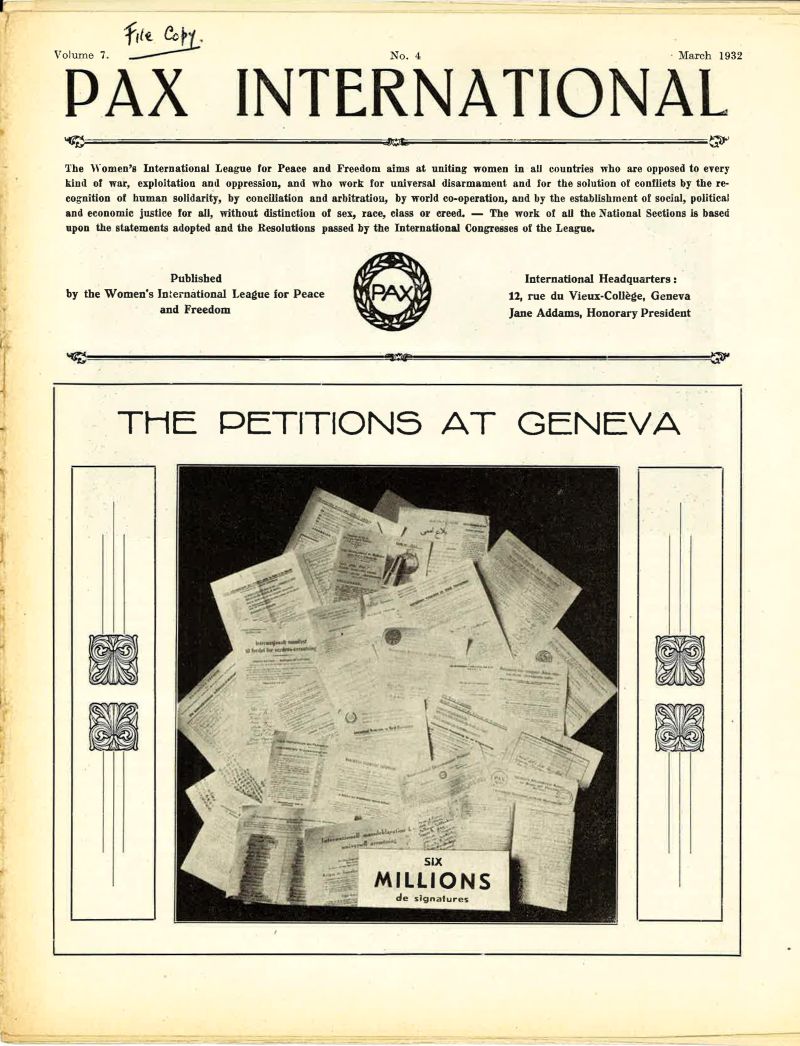 Pax International, March 1932
Pax International, March 1932
Formed in 1915, the Women’s International League for Peace and Freedom (WILPF) only began publishing Pax in November 1925 from their new headquarters in Geneva. The newsletter documents the involvement of feminist pacifists in international campaigns as they debated and intervened in world conflicts and promoted peace. WILPF continues as an active organisation today.
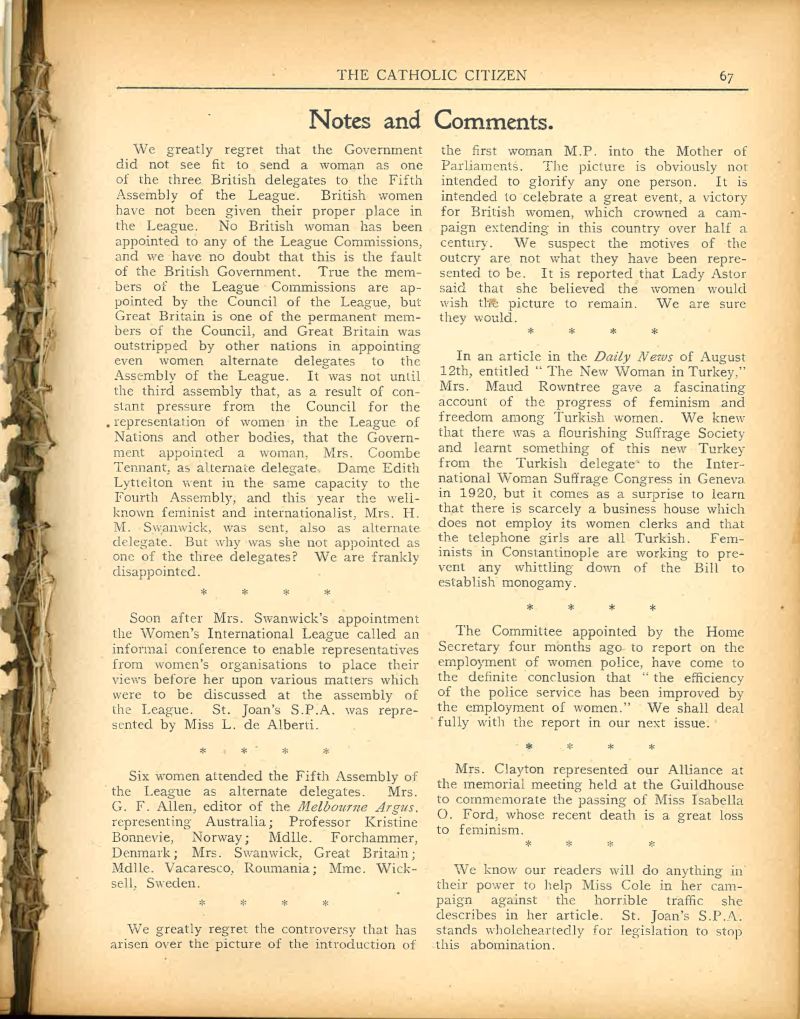
The Catholic Citizen, 15 September 1924
Denominational women’s organisations were among those who envisioned a role for women in a (re)constructive internationalism and pressured the government for opportunities to participate in the League of Nations. Addressing its readers as world citizens, this journal (formerly The Catholic Suffragist) highlighted international issues and news of women’s progress in other countries.
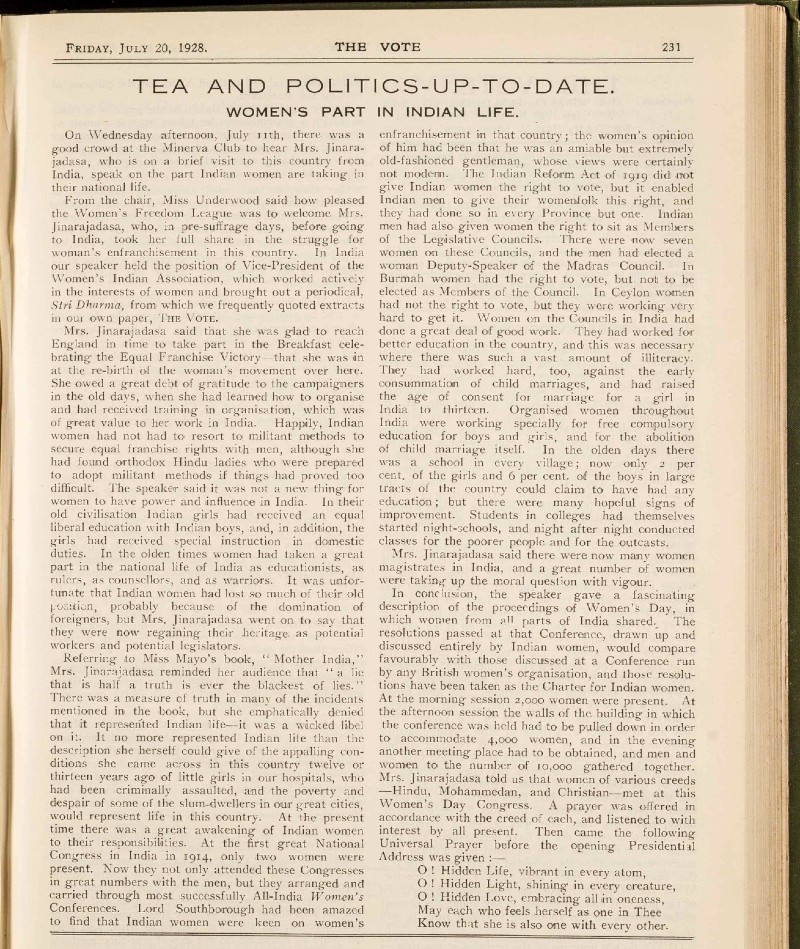 The Vote, 20 July 1928
The Vote, 20 July 1928
Internationalism was undermined by imperialist assumptions on the part of British feminists regarding the role and treatment of women in other parts of the British Empire. Katherine Mayo’s controversial exposition of Indian culture, Mother India, became a flashpoint in 1927. As shown in this article from The Vote, the Women’s Freedom League provided regular coverage and a forum for Indian women’s groups.
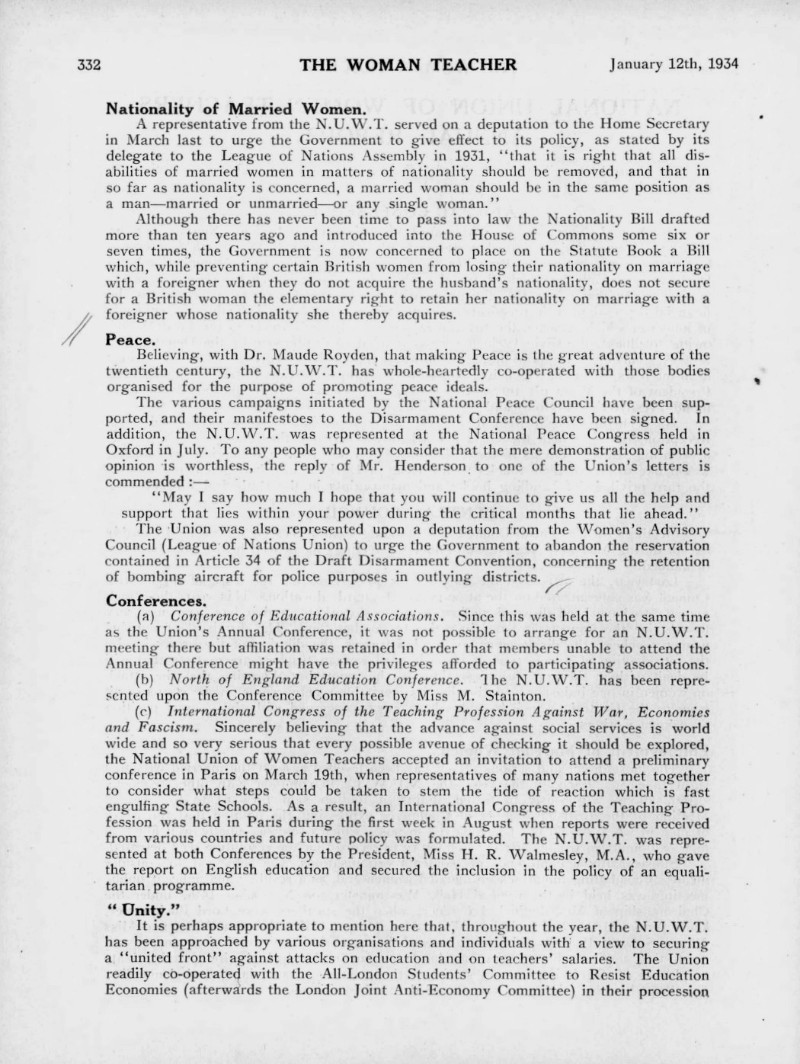 The Woman Teacher, 12 January 1934*
The Woman Teacher, 12 January 1934*
Ostensibly a professional organisation, the National Union of Women Teachers (NUWT) was actively involved in both an equalitarian feminist agenda at the national level and international campaigns. Their paper regularly dealt with peace, imperialism, and anti-fascism, as evident in this issue containing the NUWT’s annual report.
*Image UCL Special Collections UWT/H/1/23
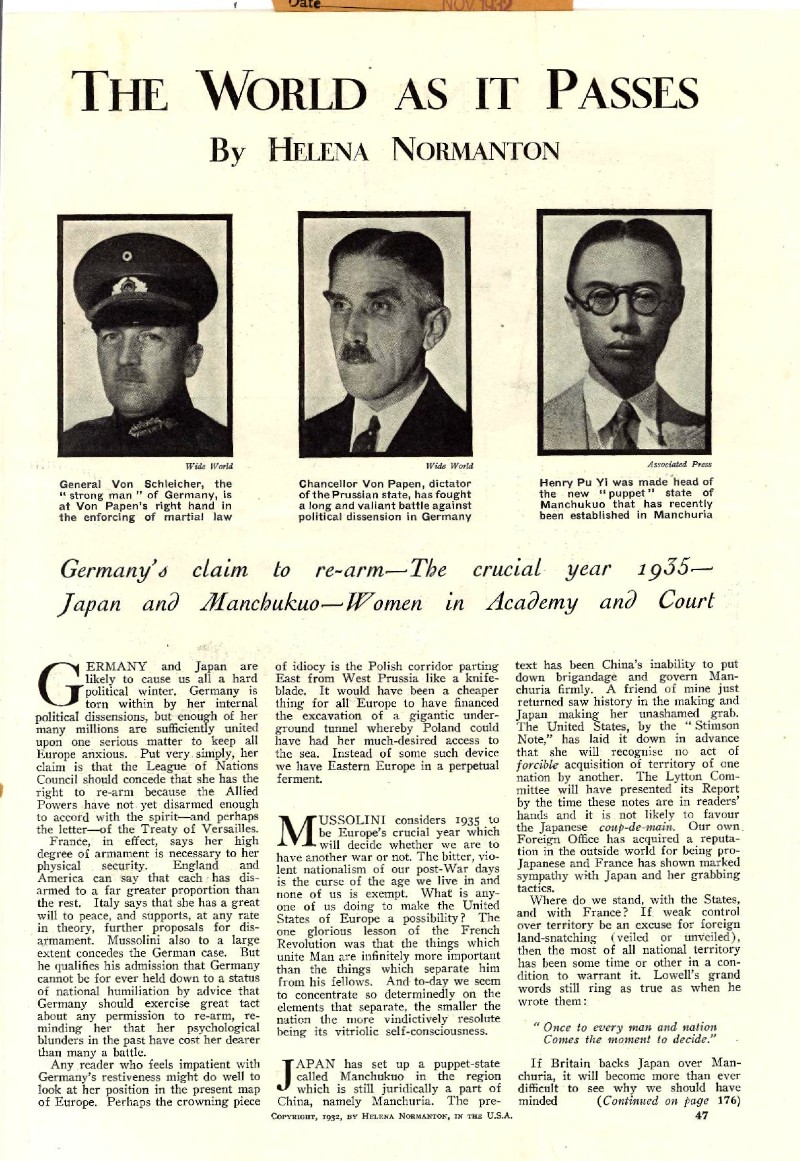
Good Housekeeping, November 1932
Even readers of the domestic monthly Good Housekeeping were addressed as having an active interest in international affairs.This regular feature by the pioneering barrister and feminist campaigner Helena Normanton was central to the magazine’s increasingly internationalist outlook in the 1930s, constructing modern women as citizens of the world rather than the nation.
Go to the exhibition home page